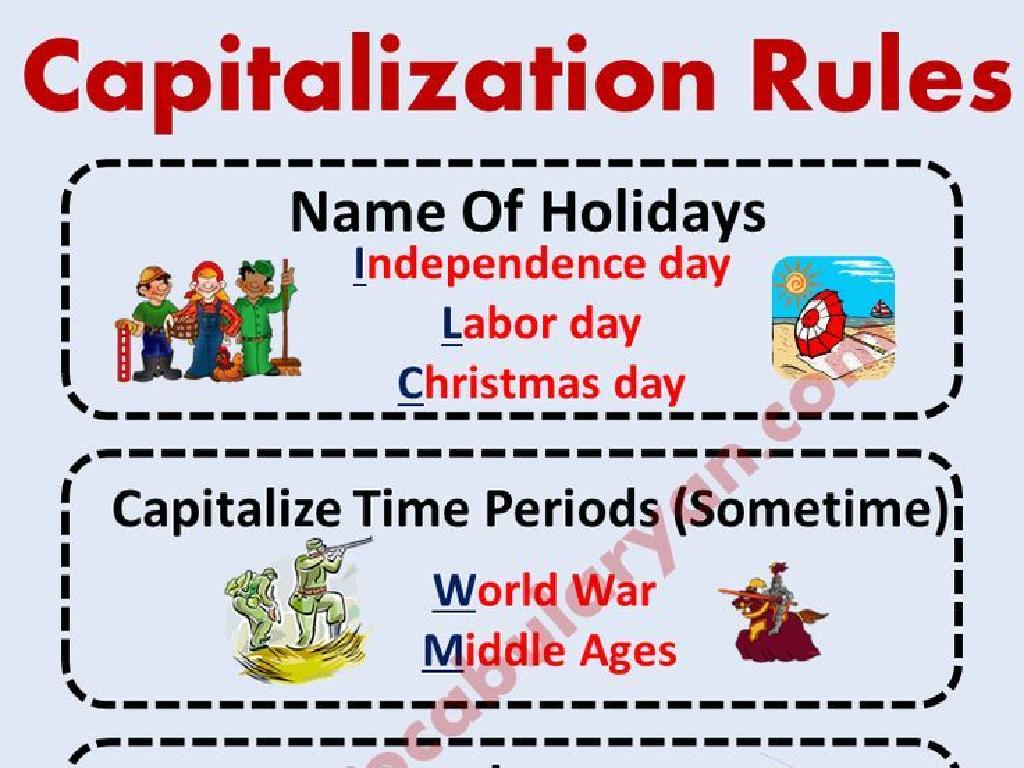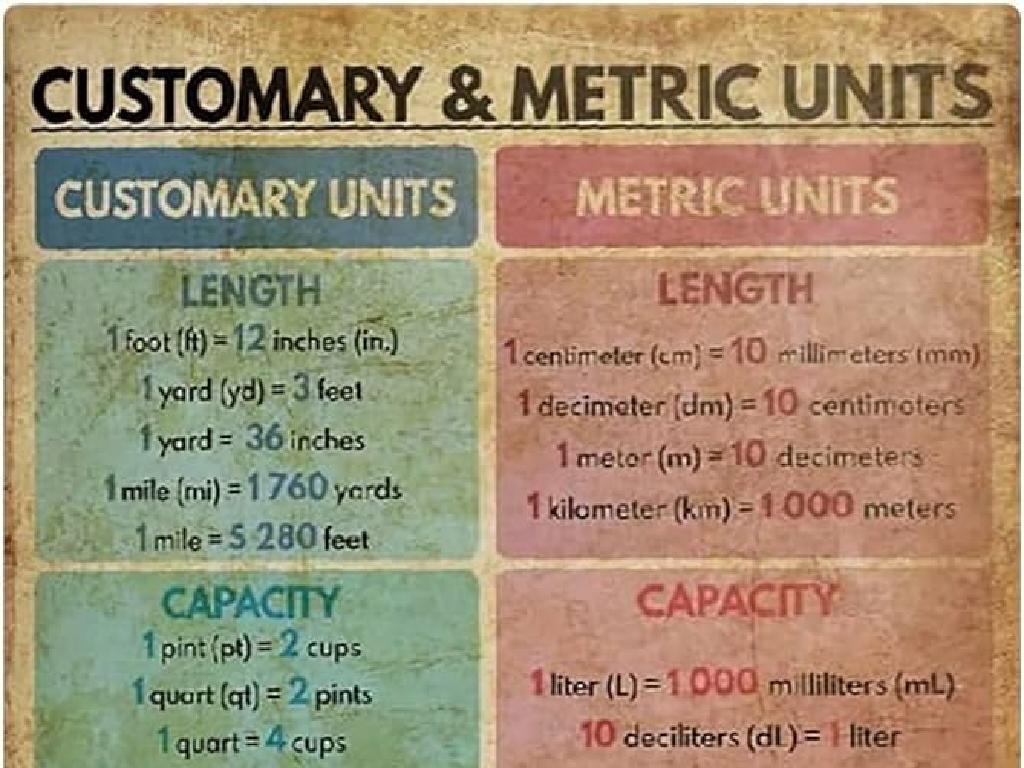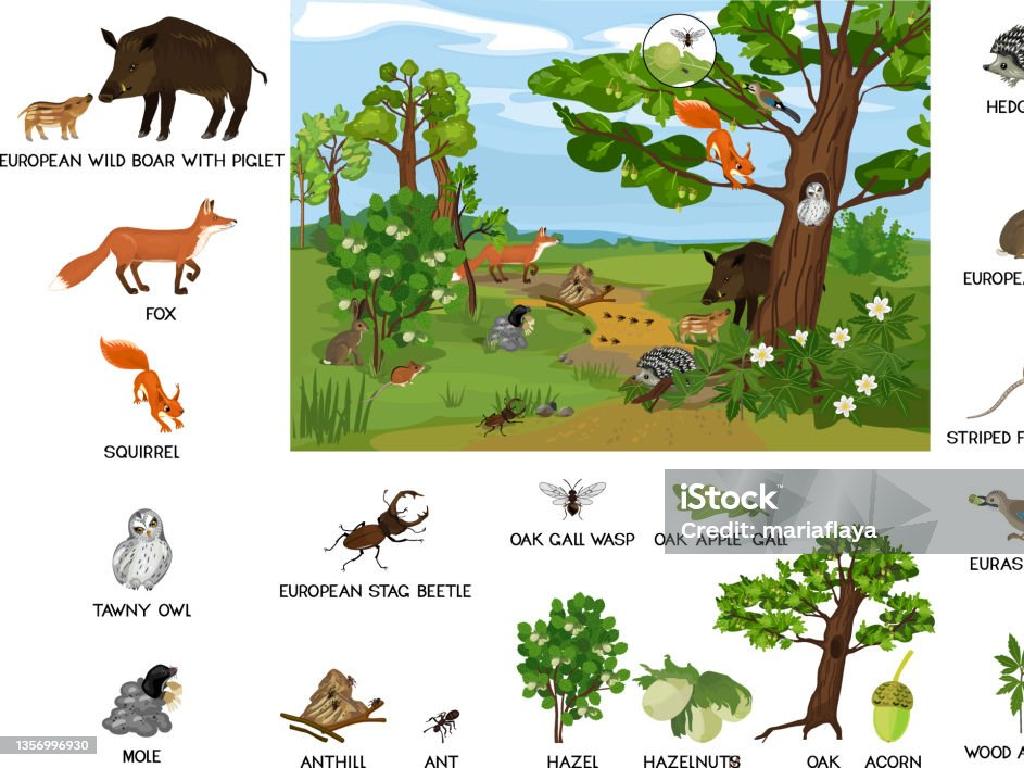Identify And Select Countries Of Oceania
Subject: Social studies
Grade: Seventh grade
Topic: Oceania: Geography
Please LOG IN to download the presentation. Access is available to registered users only.
View More Content
Exploring Oceania’s Geography
– Oceania’s geographic overview
– A vast region with numerous islands in the Pacific Ocean.
– Continents vs. regions
– Understanding how Oceania differs from other continental regions.
– Oceania’s country count
– Oceania comprises 14 countries, including Australia and New Zealand.
– Population and diversity insights
– Home to over 40 million people with rich cultural diversity.
|
This slide introduces students to the geography of Oceania, a unique and diverse region made up of islands in the Pacific Ocean. It’s important to clarify the difference between continents and regions, as Oceania is often referred to as a continent but is technically a region. Highlight that Oceania includes 14 countries, each with its own distinct culture, language, and history. Emphasize the population and the cultural diversity found within these countries, which is a result of the region’s vast geography and history of colonization and migration. Encourage students to explore the individual countries that make up Oceania in future lessons.
Exploring the Countries of Oceania
– List Oceania’s sovereign states
– 14 countries including Fiji, Samoa, and Tonga
– Differentiate country and territory
– Countries are independent, territories are not
– Focus on Australia, New Zealand, PNG
– These are the three largest and most populous
– Understand their significance
|
This slide aims to introduce students to the geopolitical landscape of Oceania by listing its countries and distinguishing between countries and territories. Emphasize that while countries like Fiji, Samoa, and Tonga have their own governments, territories might be governed by another country. Highlight Australia, New Zealand, and Papua New Guinea due to their size, population, and influence in the region. Discuss the unique features of these countries, such as Australia’s diverse ecosystems, New Zealand’s Maori culture, and Papua New Guinea’s linguistic diversity. Encourage students to explore these countries on a map and consider their importance in Oceania’s geography and global relations.
Physical Features of Oceania
– Explore the Great Barrier Reef
– World’s largest coral reef system
– Discover the Outback
– Vast, remote interior of Australia
– Fiji’s tropical islands
– Over 300 islands with unique ecosystems
– Geography’s impact on culture
– Lifestyle and traditions shaped by land and sea
|
This slide aims to introduce students to the major physical features of Oceania and how these features influence the culture and lifestyle of the region’s inhabitants. The Great Barrier Reef is a key example, as it’s not only a natural wonder but also a crucial part of the marine life and tourism in Australia. The Outback represents the rugged interior landscapes that have shaped Australian culture and identity. Fiji’s tropical islands showcase the biodiversity and the relationship between the people and their environment. Highlight how each of these features contributes to the unique cultural practices, economies, and ways of life in Oceania. Encourage students to think about how their own environment influences their daily lives as a comparison.
Cultural Diversity in Oceania
– Indigenous cultures introduction
– Explore the rich traditions of native Oceanic peoples.
– European colonization impact
– How European settlement altered the region’s cultural landscape.
– Modern cultural expressions
– Today’s Oceania blends ancient customs with contemporary arts.
– Music, dance, and art significance
– These forms reflect Oceania’s identity and history.
|
This slide aims to give students a glimpse into the rich tapestry of Oceania’s cultural diversity. Begin with an introduction to the indigenous cultures, emphasizing their varied traditions and the importance of oral histories. Discuss the profound changes brought about by European colonization, including shifts in power dynamics and cultural assimilation. Highlight modern cultural expressions of music, dance, and art as a testament to the resilience and adaptability of Oceanic peoples. These expressions serve as a bridge between the past and present, showcasing the unique blend of traditional and modern influences that characterize the region today. Encourage students to consider how culture is a living, evolving entity and to respect the diversity within Oceania.
Economies of Oceania
– Overview of Oceania economies
– Explore the diverse economic systems across Oceania’s nations
– Natural resources and tourism
– How do natural beauty and resources drive the economy?
– Geography’s impact on economy
– Why would a country’s location and terrain influence its wealth?
– Case studies: Australia & Fiji
– Compare a large economy like Australia with a tourism-focused economy like Fiji
|
This slide aims to give students a broad understanding of the various economies within the Oceania region. Emphasize the diversity, from the advanced economy of Australia to the smaller, tourism-dependent economies like Fiji. Highlight the significance of natural resources, such as minerals and fertile land, in driving some economies, while others rely heavily on the tourism industry, thanks to their beautiful landscapes and rich cultures. Discuss how a country’s geographical features, such as its proximity to trade routes or its terrain, can influence its economic activities and opportunities. Use Australia and Fiji as contrasting case studies to illustrate these points. Encourage students to think about how their own region’s geography affects its economy.
Environmental Challenges in Oceania
– Climate change effects on Oceania
– Rising sea levels and extreme weather threaten islands.
– Endangered species protection
– Efforts to save unique wildlife like the Kiwi and Kakapo.
– Significance of coral reefs
– Coral reefs are biodiversity hotspots crucial for ecosystems.
– Conservation of marine life
– Oceania’s seas are home to diverse species needing protection.
|
This slide aims to educate students on the environmental issues facing Oceania, emphasizing the urgency of climate change and its detrimental effects on island nations. Highlight the connection between human activities and the increasing threats to wildlife, stressing the importance of conservation efforts for endangered species. Discuss the ecological and economic importance of coral reefs, and how their health is vital to marine life and local communities. Encourage students to think about how they can contribute to preserving these natural treasures, fostering a sense of global stewardship.
Class Activity: Exploring Oceania
– Interactive map: Locate Oceania countries
– Group discussion on country facts
– Choose a country and find fun facts like capital, population, or culture
– Reflect on Oceania’s geographical impact
– Consider how islands, climate, and location affect life in Oceania
– Share findings with the class
|
This activity is designed to engage students with the geography of Oceania through an interactive map exercise. Students will work in groups to identify and select countries on a map of Oceania. Each group will then choose one country to research and share interesting facts about, such as its capital city, population, culture, and unique geographical features. Afterward, students will reflect on how the geography of Oceania, with its vast expanse of islands and diverse climates, shapes the lives and cultures of its inhabitants. Encourage students to think critically about the relationship between geography and daily life. Possible activities include creating a fact file for each country, discussing how geography affects food and traditions, or comparing and contrasting two different countries in Oceania.






